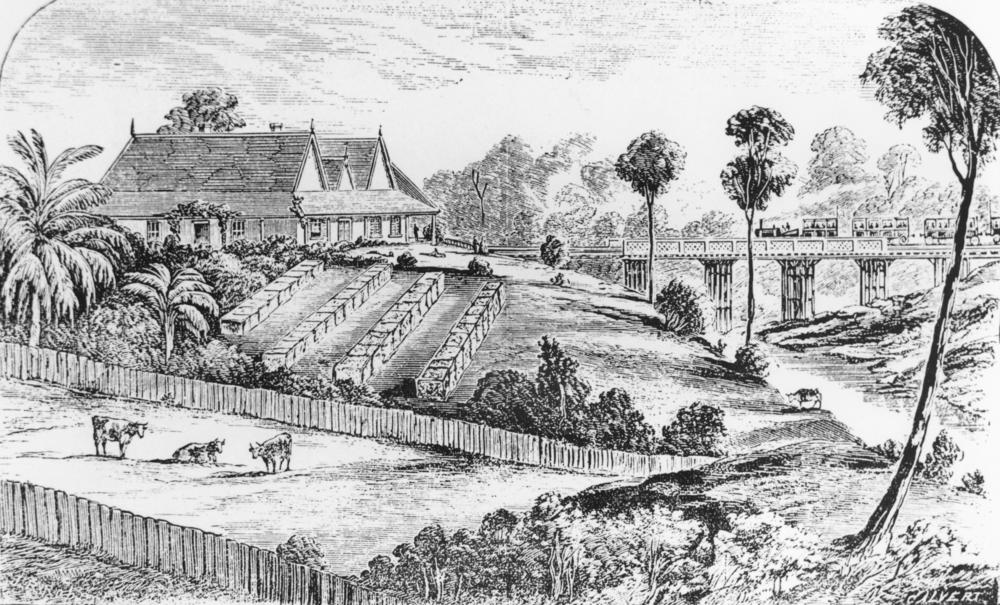|
Queensland Railways 1450 Class
The 1450 class was a class of diesel locomotive built by Clyde Engineering, Granville for Queensland Railways in 1957-1958. History The 1450 class was an evolution of the 1400 class, being built as a Co-Co instead of an A1A-A1A. This increased the weight by but improved the tractive effort. They mainly operated in South East Queensland. To accommodate the Co-Co bogies, the unit was lengthened on both ends. The Sarmiento Railway in Argentina operated similarly-lengthened G12s, officially designated the GR12. The South American units differed from the Australian ones in having only the No. 1 end hood lengthened. The first was withdrawn in December 1986. Three have been preserved by Queensland Rail's Heritage Division, and are stored at Workshops Rail Museum, North Ipswich North Ipswich is a suburb of Ipswich in the City of Ipswich, Queensland, Australia. In the , North Ipswich had a population of 4,515 people. Raymonds Hill is a neighbourhood within the suburb of North I ... [...More Info...] [...Related Items...] OR: [Wikipedia] [Google] [Baidu] |
Queensland Railways 1400 Class
The 1400 class was a class of diesel locomotive built by Clyde Engineering, Granville for Queensland Railways between 1955 and 1957. History In 1955, Clyde Engineering demonstrated an Electro-Motive Diesel G12 locomotive to Queensland Railways who purchased it along with two other demonstrators under construction, and also placed an order for a further 10. The first three were initially numbered 1230-1232, before being reclassified as the 1400 class. When built, they were tested on standard gauge with Bo-Bo bogies, and received their A1A-A1A bogies upon arrival in Queensland. The demonstrators differ from the production series in placement of the number boxes and marker lights on the ends of the unit. They are similar in appearance to the NZR DA class, first-series Victorian Railways T class and the Kowloon-Canton Railway Class 50 (later the CFCLA TL class), and mainly operated in South East Queensland. The first was withdrawn in December 1986. Two have been preserved: [...More Info...] [...Related Items...] OR: [Wikipedia] [Google] [Baidu] |
South East Queensland
South East Queensland (SEQ) is a bio-geographical, metropolitan, political and administrative region of the state of Queensland in Australia, with a population of approximately 3.8 million people out of the state's population of 5.1 million. The area covered by South East Queensland varies, depending on the definition of the region, though it tends to include Queensland's three largest cities: the capital city Brisbane; the Gold Coast; and the Sunshine Coast. Its most common use is for political purposes, and covers and incorporates 11 local government areas, extending from Noosa in the north to the Gold Coast and New South Wales border in the south (some sources include Tweed Heads, New South Wales which is contiguous as an urban area with Brisbane/Gold Coast), and west to Toowoomba (which is simultaneously considered part of the Darling Downs region). South East Queensland was the first part of Queensland to be settled and explored by Europeans. Settlements initially aro ... [...More Info...] [...Related Items...] OR: [Wikipedia] [Google] [Baidu] |
Railway Locomotives Introduced In 1957
Rail transport (also known as train transport) is a means of transport that transfers passengers and goods on wheeled vehicles running on rails, which are incorporated in tracks. In contrast to road transport, where the vehicles run on a prepared flat surface, rail vehicles (rolling stock) are directionally guided by the tracks on which they run. Tracks usually consist of steel rails, installed on sleepers (ties) set in ballast, on which the rolling stock, usually fitted with metal wheels, moves. Other variations are also possible, such as "slab track", in which the rails are fastened to a concrete foundation resting on a prepared subsurface. Rolling stock in a rail transport system generally encounters lower frictional resistance than rubber-tyred road vehicles, so passenger and freight cars (carriages and wagons) can be coupled into longer trains. The operation is carried out by a railway company, providing transport between train stations or freight customer faciliti ... [...More Info...] [...Related Items...] OR: [Wikipedia] [Google] [Baidu] |
